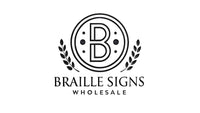ADA Signs: Myth vs. Fact: What You Need to Know
In the world of accessibility, ADA compliance is more than just a legal requirement—it's a commitment to inclusivity. With nearly 61 million adults in the U.S. living with a disability, ADA-compliant signs are not just important; they are essential. These signs ensure that everyone, regardless of ability, can navigate public spaces with ease. Let's unravel some common myths about ADA signage and provide you with clear, factual guidance on design, materials, and installation.
The Truth About ADA Signage Requirements
Myth 1: Every Sign Must Be ADA-Compliant
Reality Check: Not every sign needs to meet ADA standards. Compliance is crucial for signs that identify permanent rooms, provide directions, or indicate exits. Informational signs, however, are exempt. For areas like restrooms and elevators, tactile elements, including Braille, are essential. Jane Doe, an accessibility expert from Proactive Access LLC, emphasizes, "Ensuring the correct signs are ADA compliant is vital for accessibility and avoiding costly penalties." Dive deeper into this topic at Proactive Access LLC.
Myth 2: Braille is Mandatory on All ADA Signs
Reality Check: Braille is specifically required for permanent room labels, emergency exits, and restrooms, not for temporary signage like event-specific signs. For more insights, explore resources from the Paralyzed Veterans of America.
Myth 3: ADA Signs Must Follow Specific Color Schemes
Reality Check: The key requirement is high contrast for readability, not specific colors. This allows for creative design while maintaining compliance. For more information, visit Proactive Access LLC.
Myth 4: Wheelchair Icons Don’t Need ADA Compliance
Reality Check: The International Symbol of Accessibility (ISA) must meet specific standards for contrast and sizing to ensure visibility and comprehension. These symbols are crucial for promoting accessibility. More details can be found at Proactive Access LLC.
Myth 5: ADA Signs Are Only for Government Buildings
Reality Check: ADA requirements extend to all public and commercial spaces, including restaurants, hotels, and schools. This ensures that everyone can access essential services and facilities. For further reading, visit Paralyzed Veterans of America.
Designing with Compliance in Mind
Myth: "ADA Lettering Has a Universal Size"
Reality Check: Tactile character sizes vary based on visibility needs, ensuring legibility from different distances. For precise guidelines, refer to Proactive Access LLC.
Myth: "Decorative Fonts Are Prohibited"
Reality Check: Decorative fonts are allowed as long as they remain clear and readable. This offers a touch of creativity in design. More insights are available at Proactive Access LLC.
Practical Tips for ADA Signage
When choosing materials for ADA signs, prioritize durability to withstand environmental conditions. Proper mounting heights, typically between 48 to 60 inches from the floor, ensure accessibility for all users. For compliance assurance, consider consulting authoritative resources and exploring products from BrailleSignWholesale.
Embracing Accessibility
Understanding ADA signage requirements is crucial for creating accessible environments. By debunking these myths, we hope to inspire you to evaluate and update your current signage for compliance. For expert advice, consult authoritative sources and consider making necessary updates to enhance accessibility.
Explore Further
For a deeper dive into ADA-compliant products, visit BrailleSignWholesale and ensure your signage meets the latest standards.









